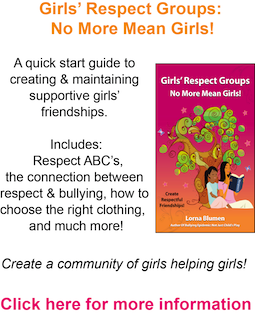 Teens, parents, and schools often clash over standards for dress, both in school and out. Teaching self respect via appropriate clothing choices has always been a tough job for parents – every generation of kids pushes the envelope for dress and retailers have started to offer risky and sexualized clothing options for children.
Teens, parents, and schools often clash over standards for dress, both in school and out. Teaching self respect via appropriate clothing choices has always been a tough job for parents – every generation of kids pushes the envelope for dress and retailers have started to offer risky and sexualized clothing options for children.
Elizabeth Hurley made news for her line of skimpy bikinis for young girls[1] and Abercrombie & Fitch thought it was a great idea to make thong underwear for elementary school girls in 2002.[2] Endlessly creative, A&F also introduced push-up bikini tops for eight-year-olds in 2011. Recently, Walmart introduced anti-aging cosmetics for eight to 12-year-old girls.[3]
As adults, we are well prepared to guide our kids through the time period we grew up in, and not nearly as comfortable or capable guiding our kids through the challenges of today’s teen minefield. The way we dress communicates how we feel about ourselves to the world. Adults are unwittingly guiding kids towards sex too early, pushing them prematurely out of childhood into adulthood, teaching them that they and their bodies aren’t good enough without padding, makeup, and 6-pack abs.
Teaching kids self respect by dressing appropriately is part of a parent’s job, but there are a lot of parents ignoring or outsourcing their responsibility. To avoid conflict, parents are increasingly giving their teens complete decision-making control for clothing choices or hiring professional image consultants to teach their teen girls to dress appropriately.[4] Parents belong in the “war zone” of the clothing store dressing room with their preteen kids. Many a nuclear explosion has erupted in dressing rooms as we taught our kids how to buy jeans – not too tight [or baggy], not too low, no butt cleavage or underwear showing, squat down to test, etc.
For younger kids, it is key that parents choose the appropriate clothing for their kids. One parent’s response to the uproar around Elizabeth Hurley’s line of bathing suits was “What’s the problem? I buy my kids’ clothes. If I don’t want her to wear it, I don’t buy it”. This is true, but this method will only work for a very short time since kids start paying attention to clothing choices very early these days. We are already teaching our children (as young as 5 & 6) about clothing choices in the preteen and teen years, even when WE are buying the clothes.
There is hope. Even when the adults have little sense, sometimes kids step in to fill the gap. Heidi Medina, cheerleading captain of Central High School in Bridgeport, CT, went to the Bridgeport Board of Education to say that their cheerleading uniforms were too skimpy, revealing the cheerleaders’ midriffs even when their arms were at their sides. “I am embarrassed to stand up here dressed like this. Is this really how you want Bridgeport to be represented?”[5]Thank you Heidi for teaching self respect through your clothing choices. Here’s hoping the rest of the world will catch up soon.
[1] J Samakow, “Elizabeth Hurley’s Bikini Line For Young Girls Called ‘Disturbing’ And ‘Inappropriate’, Huff Post Parents Canada (http://huff.to/S9iWJl), Sept 20, 2012
[2]J Robinson, “Abercrombie & Fitch Catches Heat For Preteen Thongs,” Minneapolis Star Tribune, StarTribune.com, Jun 18, 2002
[3]“Walmart’s ‘Anti-Aging’ Makeup For 8-Year-Old Girls,” Yahoo.com, Jan 27, 2011
[4]C Alter, “The Minor Makeover,” Washington Post, WashingtonPost.com, Jul 11, 2009
[5]C Smith, “Connecticut Cheerleaders Want Uniforms With More Coverage,” ca.Sports.Yahoo.com, Oct 5, 2010
Photo Credit: istockphotos.com



1 pings
[…] our previous blog posts “What Your Hemline Says About You” and “Teaching Self Respect Through Clothing Choices”, we discussed how the world makes assumptions about us from our clothing choices and how the way we […]